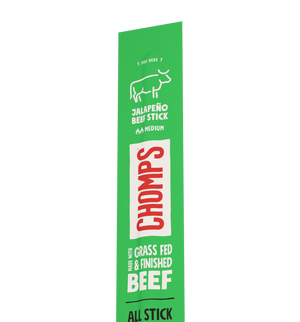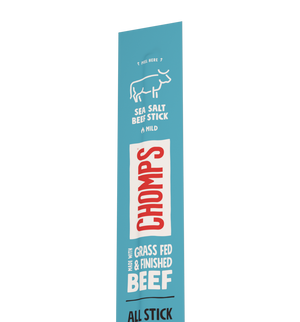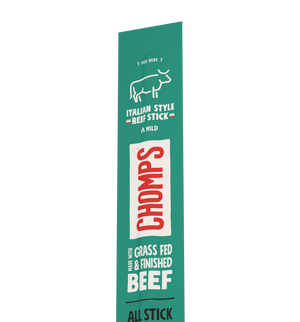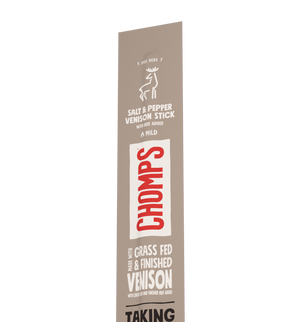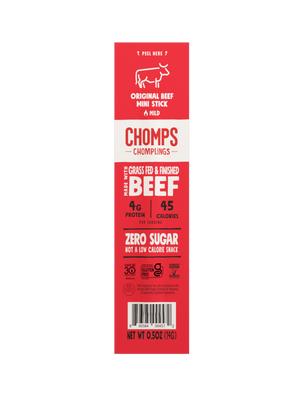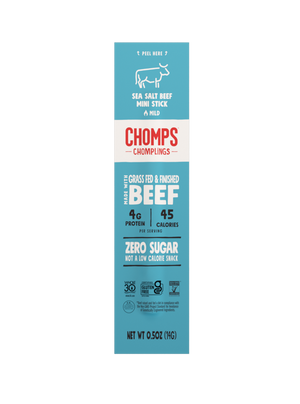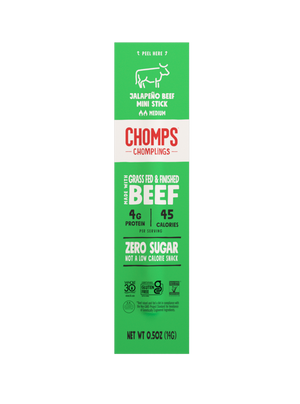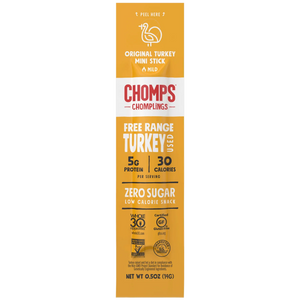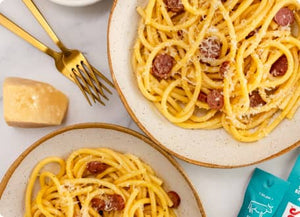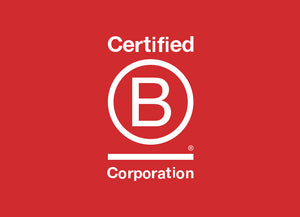Gut health has been in and out of the public conversation for centuries, but a sharp increase in autoimmune diseases has led to an explosion in discussions about leaky gut syndrome, prompted a wave of inflammation-focused approaches to eating like Paleo and the autoimmune protocol diet, and sparked a reexamination of the effects our guts have on our health and wellbeing.
The gut is often considered the "gateway to health", and many doctors believe that damage to your intestinal wall can actually lead to widespread symptoms.
The Autoimmune Protocol diet aims to reduce the symptoms of autoimmune diseases by eliminating stressors and reducing the stress you put on your gut — allowing it to heal before reintroducing potentially inflammatory foods.
In other words, the AIP diet isn't a traditional diet that is focused on weight loss and calorie reduction; an AIP diet plan is designed to promote gut health.
The Autoimmune Protocol diet is considered an evolved form of the Paleo diet, but it's even more restrictive. It's all about swapping grains and inflammatory foods for nutrient-rich, natural alternatives and then slowly reintroducing foods to see how they affect your health.
Let's get started on our AIP diet for beginners guide.
What is the AIP Diet?
The Autoimmune Protocol diet is an elimination diet designed to repair the immune system and reduce the effects of autoimmune diseases by giving your gut time to heal.
It's also referred to as the paleo autoimmune protocol, and it's sort of like paleo with added restrictions — with the express purpose of reducing autoimmune disease symptoms.
Generally speaking, autoimmune diseases are conditions when the body mistakes healthy tissues for toxic tissues and begins to attack its own body.
They're characterized by an "overactive immune system that leads to chronic inflammation and tissue destruction".
Autoimmune disease symptoms typically include inflammation such as lupus, rheumatoid arthritis, or psoriasis. But autoimmune diseases can be difficult to diagnose since their symptoms can look like other diseases, often leading them to be misidentified.
These symptoms are what an AIP diet plan is designed to push back against, and its purported benefits are achieved through healing a condition known as “leaky gut” or “hyperpermeability”.
What Does An AIP Diet Consist Of?
The Autoimmune Protocol diet consists primarily of nutrient-dense whole foods like grass-fed meats, wild-caught fish, organic vegetables, and fermented foods. It emphasizes anti-inflammatory ingredients while eliminating common trigger foods. A typical AIP diet plan includes bone broth, organ meats, and plenty of leafy greens to support gut healing.
How does the AIP Diet work?
An AIP diet plan is split into two phases: the elimination phase and the reintroduction phase.
Phase 1: Elimination
Most experts recommend a thirty-day cleanse, but you could extend this phase all the way to 90 days.
During this time you eliminate all foods suspected of causing inflammation. These include grains, legumes, dairy, sugars, alcohol, nightshades, additives, and others.
The standard AIP diet meal plan also recommends eating more nutrient-dense foods like:
-
Liver
-
Bone broth
-
Large amounts of colorful vegetables
-
High-quality meats and fats
-
Fatty fish and shellfish
-
Fermented foods
The idea is to wait until you feel better. Theoretically, by removing all suspected irritants you should notice a reduction in symptoms. You should experience less intestinal trouble, better sleep, have more mental clarity, have more energy, and generally "feel" better.
Many people on AIP diet plans use a food journal to record what they eat and how they feel.
Once you reach this point, you can begin to reintroduce foods you cut out one by one — essentially running an individualized experiment that tries to determine which foods make you feel bad.
Phase 2: Reintroduction
The reintroduction phase of an AIP diet plan occurs in increments. The process goes like this:
-
Finish the elimination phase.
-
Choose one single food or food group to reintroduce.
-
Pick a day to reintroduce the food.
-
Eat a very small amount of the food and wait 20-30 minutes.
-
If you feel okay, eat a bit more and wait a few hours.
-
If you still feel fine, eat a "normal portion".
-
Don't eat any more of that food and eat just like you were during the elimination phase for the next 5 days.
-
If you feel just as good as you did before introducing the food, then that food is safe. If you noticed feeling worse, then you can add that to your "irritant" list.
-
Repeat until all food groups have been tested.
-
Build what you've learned into your new lifestyle.
An AIP diet plan gives you the information you need to know how your body reacts to foods. Unless you're allergic, it doesn't mean you have to completely cut out the foods you've identified, either — it just equips you with the knowledge you need to make smarter choices. For example, if you know dairy makes it hard for you to sleep, you may avoid it in your weekly diet but choose to accept the consequences on holidays.
Pro tip: keep a food journal to track which days you reintroduced what and how you felt after eating them — then you can rely on that as a guide for the rest of your life.
AIP Diet Food List: What You Can and Can't Eat
There are a lot of foods you can't eat on an AIP diet plan. But the main idea is to eliminate all preservatives, grains, and inflammatory foods and replace them with more nutrient-rich foods and AIP recipes.
What Can You Eat in a Day on the AIP Diet?
A typical AIP diet plan might include bone broth with breakfast, a large salad with grilled chicken for lunch, and wild-caught fish with roasted vegetables for dinner. Snacks on your AIP diet food list could include coconut yogurt, dried fruits, or beef jerky. Each meal should include a variety of colorful vegetables and quality proteins.
-
Proteins: Beef, lamb, chicken, pork, fish, turkey, and other organic meats and fish. Discover simple and tasty AIP ground beef recipes.
-
Vegetables: yams, broccoli, cauliflower, carrots, cabbage, lettuce, mushrooms, onion, kale, arugula, cucumber, and all other leafy greens and organic vegetables (excluding nightshades like potatoes and peppers).
-
Fruits: Apples, bananas, berries, pears, peaches, mangos, and all other fruits in moderation.
-
Herbs and spices: Salt, cilantro, thyme, dill, cinnamon, basil, mint, rosemary, and most cooking herbs and spices.
-
Fats: Avocado oil, olive oil, coconut oil, beef tallow, chicken fat, and other fats derived from grass-fed beef.
-
Pantry and baking: Bone broth powder, apple cider vinegar, coconut sugar, honey, coconut flour, arrowroot starch, and other natural syrups.
-
Fermented foods (excluding dairy): Think sauerkraut, kimchi, kombucha, kefir — all of which are fun and easy to make at home.
Note: Part of succeeding with this AIP food list is remembering that a lot of foods aren't inflammatory by themselves, but the additives and preservatives companies add to them are. Whatever you can do to avoid big industry meats (fed by grains instead of grass) and fish farms, do so.
What Foods Should I Avoid on the Autoimmune Protocol Diet?
A proper AIP diet food list excludes all grains, legumes, dairy, eggs, nightshades, nuts, seeds, and processed foods. Additionally, you should avoid artificial sweeteners, alcohol, coffee, and food additives. These restrictions help reduce inflammation and potential immune system triggers during the elimination phase.
-
Grains: Rice, rye, quinoa, corn, oats, wheat, barley, and any other food or drink derived from grains.
-
Legumes: Black beans, pinto beans, lima beans, peanuts, soy, cocoa, lentils, and any other bean or legume.
-
Nuts and seeds: Almonds, chia, cashews, pecans, pistachios, and any other seed oil or product.
-
Select spices: Allspice, anise, pepper, poppy seeds, celery seed, cumin, caraway, mustard, nutmeg, and fennel seed.
-
Dairy: Milk, yogurt, cheese, cream, butter, and anything else made of dairy.
-
Nightshades: Bell peppers, eggplants, tomatoes, potatoes, cherries, red spices, goji berries, and tomatillos.
-
Processed/industrial foods: Additives and preservatives all contribute to an unhealthy gut lining, so anything that is store-frozen or packaged needs to go.
-
Sugars: molasses, brown sugar, regular sugar, and any foods containing sugar.
-
Alcohol: Beer, liquor, wine, and anything else containing alcohol (with the exception of kombucha).
The Benefits of the AIP Diet
The primary benefits many people experience include reduced inflammation throughout the body. This often translates to decreased joint pain, improved skin conditions, and better digestive function.
An effective AIP diet meal plan also tends to boost energy levels as your body no longer has to work overtime processing potentially problematic foods. Many followers report enhanced mental clarity and improved sleep quality within the first few weeks of implementation.
Key benefits of the autoimmune protocol include:
-
Symptom reduction: Many autoimmune disease symptoms like fatigue, brain fog, and digestive issues often improve.
-
Better nutrient absorption: By removing irritating foods, your gut can better absorb essential vitamins and minerals.
-
Personalized food knowledge: The reintroduction phase helps you identify your specific trigger foods.
-
Improved energy levels: Stable blood sugar and reduced inflammation often lead to sustained energy throughout the day.
-
Enhanced sleep quality: Many people find their sleep patterns improve when following an AIP diet plan for beginners.
An AIP diet plan for beginners serves as both a healing protocol and an educational tool to help you understand exactly how different foods affect your unique body chemistry. This personalized approach makes it easier to maintain long-term dietary changes that support your health goals.
How Is the AIP Diet Related to Leaky Gut?
The medical diagnosis of leaky gut is still being contested in the medical field, but the idea of intestinal permeability has been known in medical literature for over one hundred years.
Studies have linked intestinal permeability to celiac disease, irritable bowel syndrome (IBS), and Crohn's disease.
Now doctors are trying to figure out how widespread the effects of a leaky gut are. Some doctors don't think there is enough evidence to blame certain symptoms on hyperpermeability — others are convinced leaky gut syndrome is one of the great crises of our age with an estimated 50 million people suffering from an autoimmune body.
These distinctions are what doctors are currently researching.
An AIP diet plan aims to eliminate inflammatory foods and replace them with foods that are easy to digest and nutrient-rich. Over time, this should close up the “holes” and help heal your gut.
This "healing" aims to:
-
Reduce the symptoms associated with Autoimmune Disease
-
Reduce autoimmune responses
-
Restart your immune system
-
Prevent secondary autoimmune diseases
Tips for Success on the AIP Diet
Starting an AIP diet plan for beginners can feel overwhelming, but with the right strategies, you can set yourself up for success. The key is preparation and patience as your body adjusts to this new way of eating.
Essential preparation strategies include:
-
Meal prep extensively: Batch cook proteins and vegetables to make your AIP diet meal plan easier to follow throughout busy weeks
-
Stock your pantry: Keep AIP-compliant ingredients like coconut oil, bone broth, and approved spices readily available
-
Plan your meals in advance: A well-structured AIP diet meal plan prevents impulsive food choices that could derail your progress
-
Start gradually: Consider easing into the elimination phase over several days rather than making drastic changes overnight
Creating a comprehensive autoimmune protocol diet food list and keeping it visible helps you stay focused on compliant options. Many people find success by dedicating one day per week to meal preparation to ensure their AIP diet plan for beginners stays on track.
Remember that social situations require extra planning. Always eat before attending gatherings, and don't hesitate to bring your own AIP diet meal plan-friendly dishes to share. This approach helps you stick to your goals while introducing others to delicious compliant foods.
Easy 7-Day AIP Meal Plan
Just because an AIP diet is super restrictive doesn't mean you can't eat savory dishes and delicious desserts. We've made an easy 7-day autoimmune diet plan for you that's specifically based on the elimination phase.
Day 1
-
Breakfast: Fruit salad with bananas, strawberries, and blueberries
-
Lunch: Oven-baked salmon with lemon slices over a bed of arugula
-
Snack: Fresh cucumber
-
Dinner: Ground beef patties
Day 2
-
Breakfast: Sweet potato hash with steak
-
Lunch: Turkey breast and avocado
-
Dinner: Chicken thighs and asparagus
Day 3
-
Breakfast: Sautéed ham and spinach.
-
Lunch: Kale chips and chicken breast.
-
Snack: A can of tuna
-
Dinner: Bunless mushroom burger
Day 4
-
Breakfast: Mushroom and onion mix with pork loin
-
Lunch: Creamy AIP chicken salad
-
Snack: Pickles
-
Dinner: Roasted squash, broccoli, and grilled tilapia
Day 5
-
Breakfast: Chicken livers and spinach
-
Lunch: Turkey burgers
-
Dinner: Roasted duck and brussel sprouts
Day 6
-
Breakfast: AIP porridge
-
Lunch: Sweet potato chicken poppers
-
Snack: Fresh melon and honey
-
Dinner: Shrimp over zucchini pasta
Day 7
-
Breakfast: Blueberry coconut smoothie
-
Lunch: Grilled chicken tenders and asparagus
-
Snack: Dried fruit
-
Dinner: Coconut shrimp and grits
Additional AIP Meals Snack Options
Many of us rely on carb-loaded foods like bread to help us stay full, and we don't realize how much we rely on them until we stop eating them. Here are a few more common snacks to add to your AIP Diet food list to help get you through those hunger pangs:
-
Avocados
-
Tuna
-
Berries
-
Cucumbers
-
Root vegetable fries
-
Pickles
-
AIP trail mix
The Bottom Line
A widespread clinical consensus has not been reached, but some studies show promising results. A 2019 study enrolled 16 women in a 10-week AIP diet meals plan, and while there weren't significant changes in thyroid function, the study's findings suggested a decrease in systemic inflammation and advised funding for a larger study.
Similarly, another 2019 study found that IBS symptoms were reduced after implementing an AIP diet meal plan, but there were only 15 participants — the authors once again recommended a wider spread study to see if the results are repeatable on a larger scale.
What does this mean for you?
While the jury is still out, the results are looking positive. If you struggle with an autoimmune disease, suspect you have a leaky gut or are curious about how an AIP diet will make you feel — give it a shot. Just remember that elimination diets require significant changes in your diet and are safest under the direction of a health professional.
The AIP diet is designed to reduce inflammation by systematically removing all foods known to or believed to agitate autoimmune systems and the gut. It's split into two phases: the elimination phase and the reintroduction phase. By eating a strict, additive and irritant-free diet for at least thirty days, you can analyze how foods make you feel from a "clean slate".
Ideally, after you complete an Autoimmune Protocol diet plan you will have a unique guide on which foods make you feel what ways and why. This is a powerful asset you can use to shape your health for years to come. While the science is still not conclusive on AIP diet plans, early studies are promising.
For quick and delicious weeknight meals, check out these 15 AIP Chicken Recipes that are easy to follow and packed with flavor.
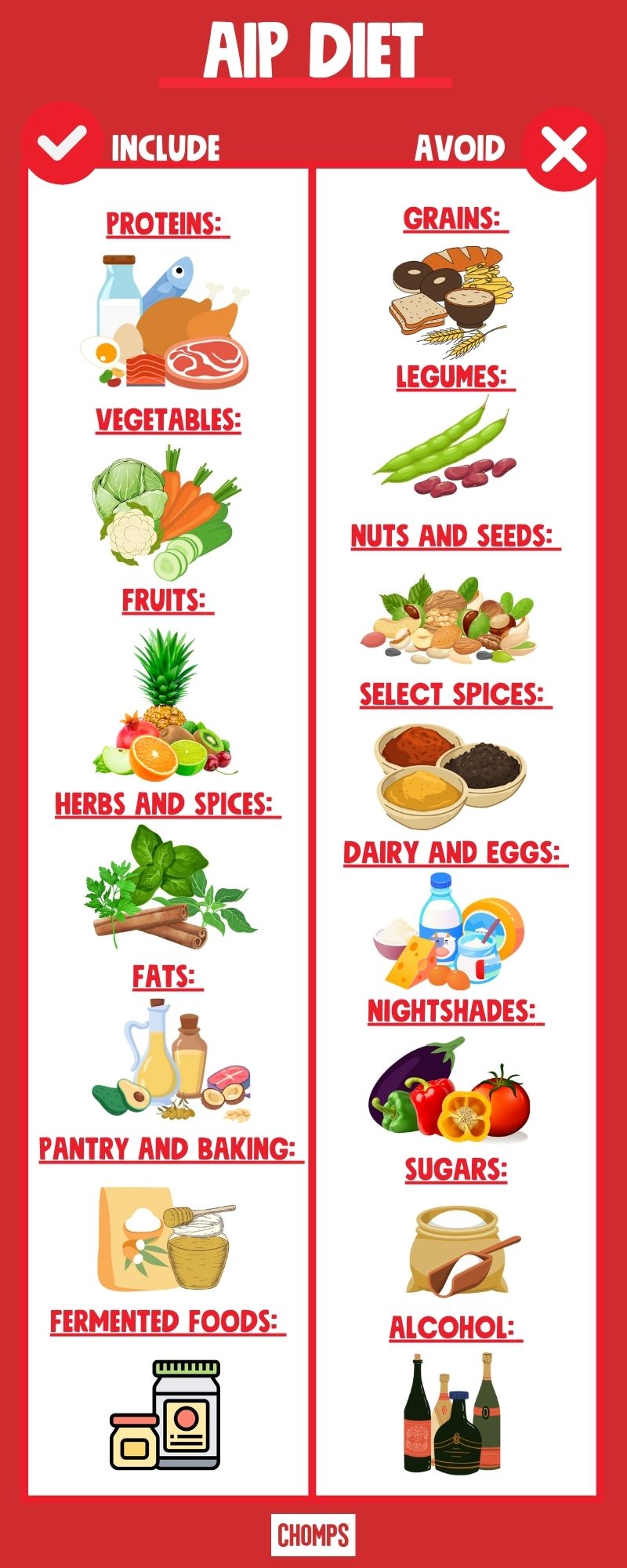
AIP Diet FAQs
What Is the AIP Diet for Beginners?
The AIP diet is an elimination protocol designed to reduce autoimmune disease symptoms by removing inflammatory foods for 30-90 days, then systematically reintroducing them. This autoimmune protocol diet helps identify personal food triggers while promoting gut healing through nutrient-dense, anti-inflammatory foods like grass-fed meats and organic vegetables.
How to Start the AIP Diet?
Begin your AIP diet plan by clearing your pantry of non-compliant foods and stocking up on approved ingredients. Create a comprehensive AIP diet food list, plan your first week's meals, and consider working with a healthcare provider. Start the elimination phase gradually to ease the transition.
What to Expect During the First Week of the AIP Diet?
The first week of an AIP diet may bring withdrawal symptoms like fatigue, headaches, or cravings as your body adjusts. Many people also experience improved energy and reduced bloating within days. Keep a food journal to track how you feel throughout this autoimmune protocol diet transition period.
What Do You Eat on an AIP Diet?
An AIP diet food list includes grass-fed meats, wild-caught fish, organic vegetables (excluding nightshades), fruits, healthy fats like avocado oil, bone broth, and fermented foods. Focus on nutrient-dense, whole foods while avoiding all processed items, grains, legumes, dairy, and eggs during the elimination phase.
What Foods Are Not Allowed on the AIP Diet?
The autoimmune protocol diet eliminates grains, legumes, dairy, eggs, nightshades, nuts, seeds, processed foods, alcohol, coffee, and refined sugars. Additionally, avoid food additives, preservatives, and industrial oils. These restrictions help reduce inflammation and potential immune system triggers during the elimination phase of your AIP diet plan.
Can You Eat Peanut Butter on the AIP Diet?
No, peanut butter is not allowed on an AIP diet. Peanuts are actually legumes, not nuts, and all legumes are eliminated during the autoimmune protocol diet. Additionally, most commercial peanut butters contain additives and preservatives that don't comply with AIP diet food list requirements.
Can You Eat Eggs on the AIP Diet?
Eggs are eliminated during the initial phase of the autoimmune protocol diet, despite their nutritional benefits. This is because egg whites contain proteins that can be inflammatory for some people with autoimmune conditions. Eggs can be reintroduced to your AIP diet food list during phase two to test individual tolerance.
Can You Eat Oatmeal on the AIP Diet?
No, oatmeal is not permitted on an AIP diet since oats are grains, and all grains are eliminated during the protocol. Instead, try AIP-compliant breakfast alternatives like sweet potato hash, fruit salads, or coconut-based porridge made with compliant ingredients that align with your autoimmune protocol diet requirements.
What Is Leaky Gut Syndrome?
Leaky gut syndrome is when your weak bowel lining allows in larger molecules, toxins, and bacteria than it should.
For many individuals, this stress can occur from gluten. Some proteins found in gluten may widen your pores and open up the intestinal wall.
When your gut lining is more porous, it can't keep out undesirables, and this results in toxins and other germs getting into your bloodstream and causing a whole host of issues.
Leaky gut awareness advocates stress the detrimental effects food industrialization has had on our guts and health as a whole. They tie everything back to how humans evolved to eat in the first place. Bread and grains were a rarity, and even when they were consumed it was through processes like sourdough that break down the grains and make them easier to digest.


